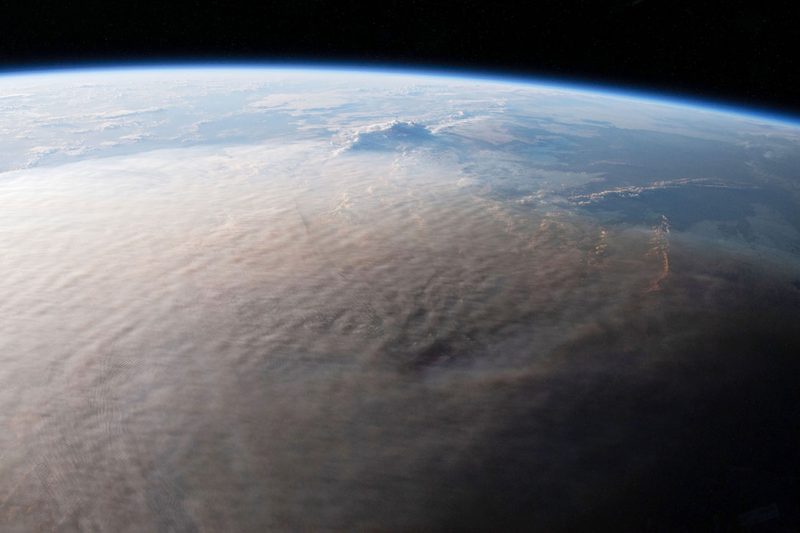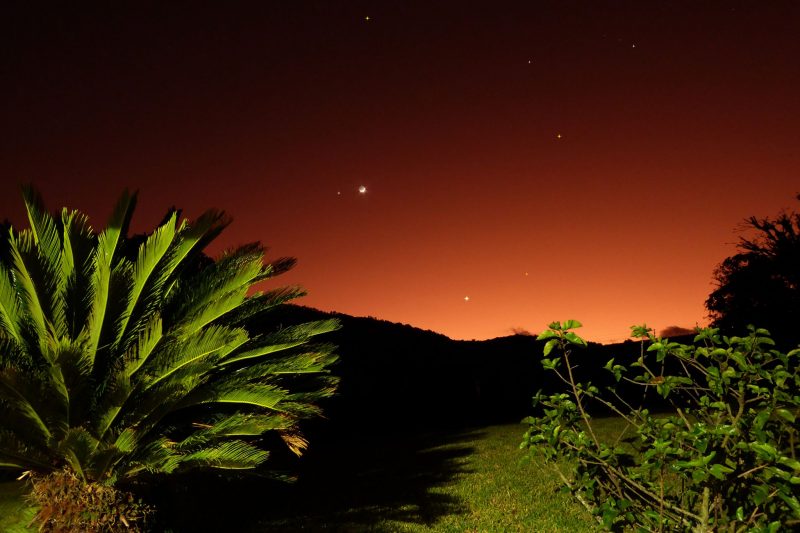
On January 15, 2022, the Tonga eruption became the largest explosion recorded in the atmosphere by modern instrumentation. One of the instruments that has been measuring the effects of Tonga is NASA’s Microwave Limb Sounder. This instrument specifically studies the edge of Earth’s atmosphere, in part to understand the causes of ozone changes. Luis Millán, an atmospheric scientist at NASA’s Jet Propulsion Laboratory, said that the enormous plume of water vapor injected into Earth’s stratosphere could be enough to temporarily affect Earth’s global average temperature and weaken our ozone layer. Subsequently, in an announcement from NASA on August 2, 2022, Millán said the water vapor readings were off the chart:
We’ve never seen anything like it … We had to carefully inspect all the measurements in the plume to make sure they were trustworthy.
Millán led a study published July 1, 2022, in the peer-reviewed journal Geophysical Research Letters.
Tonga eruption injected water vapor into the stratosphere
The researchers investigated the water vapor – enough to fill more than 58,000 Olympic-size swimming pools – that Tonga spewed into the atmosphere. Overall, Tonga’s eruption added 146 teragrams (1 teragram equals a trillion grams) of water vapor into Earth’s stratosphere. The stratosphere is the layer of atmosphere between the troposphere and the mesosphere and lies 8 to 33 miles (12 to 53 kilometers) above Earth. The researchers said that the 146 teragrams equals about 10% of the water already present in the stratosphere. It’s four times what Mount Pinatubo injected into the atmosphere in the 1991 eruption in the Philippines.

Effects on the ozone layer and temperature
It’s rare for a volcanic eruption to inject so much water into the atmosphere. This is only the third time in 18 years that NASA has measured water vapor at such high altitudes from a volcano. The other two events were the 2008 Kasatochi eruption in Alaska and the 2015 Calbuco eruption in Chile. Yet both of those were minor in scale, with the atmospheric water vapor dissipating soon after.
The water vapor from Tonga could persist for five years. Because water absorbs energy from the sun, the result should be a warming. But the scientists said that the extra water vapor should eventually cycle out leaving only a small, temporary warming effect. It would not be enough to make climate change effects noticeably worse.
Normally, we think of massive volcanic eruptions as events that can cool Earth. Mount Pinatubo did this, when it injected gas, dust and ash into the atmosphere that reflected sunlight for a cooling effect. But Tonga didn’t inject large amounts of aerosols into the stratosphere.
The other effect of water vapor in the atmosphere occurs when water molecules mix with oxygen atoms. The interaction produces hydroxide, and that’s what could lead to reductions in ozone. Ozone protects us (and plant and animal life) by blocking much of the harmful ultraviolet (UV) rays.

Why so much water vapor with the Tonga eruption?
Tonga was able to inject so much water vapor into the stratosphere because of its location underwater. The caldera of the volcano was sitting in the sweet spot: not too deep and not too shallow. Tonga’s caldera was about 490 feet (150 meters) under the ocean. If it had been shallower, there wouldn’t have been enough water to make such a large difference in the atmosphere. Had it been much deeper, the ocean pressure would have stifled the force of the eruption.

Bottom line: The Tonga eruption of January 15, 2022, injected so much water vapor into the atmosphere that it may weaken our protective ozone layer.
Source: The Hunga Tonga-Hunga Ha’apai Hydration of the Stratosphere











